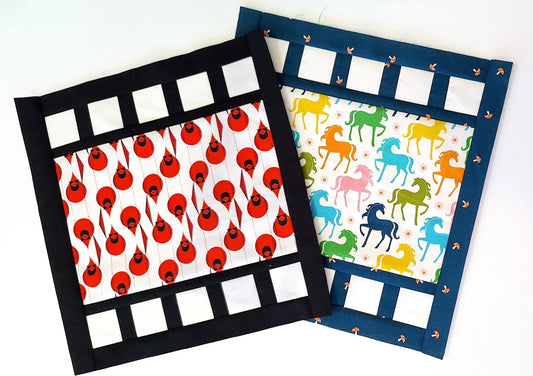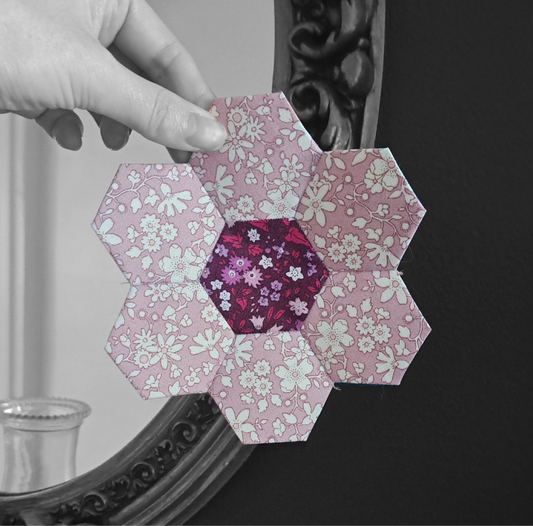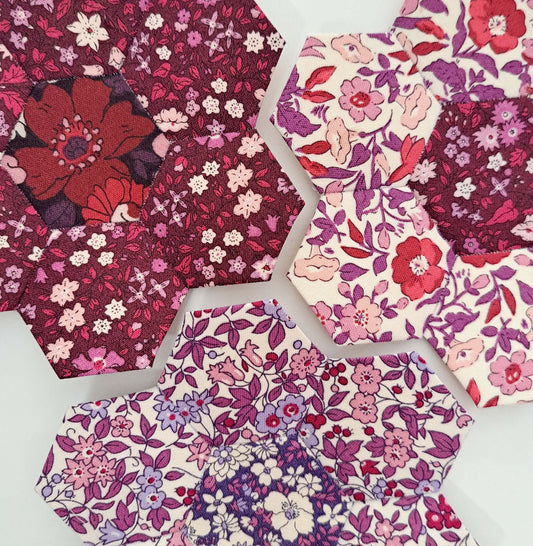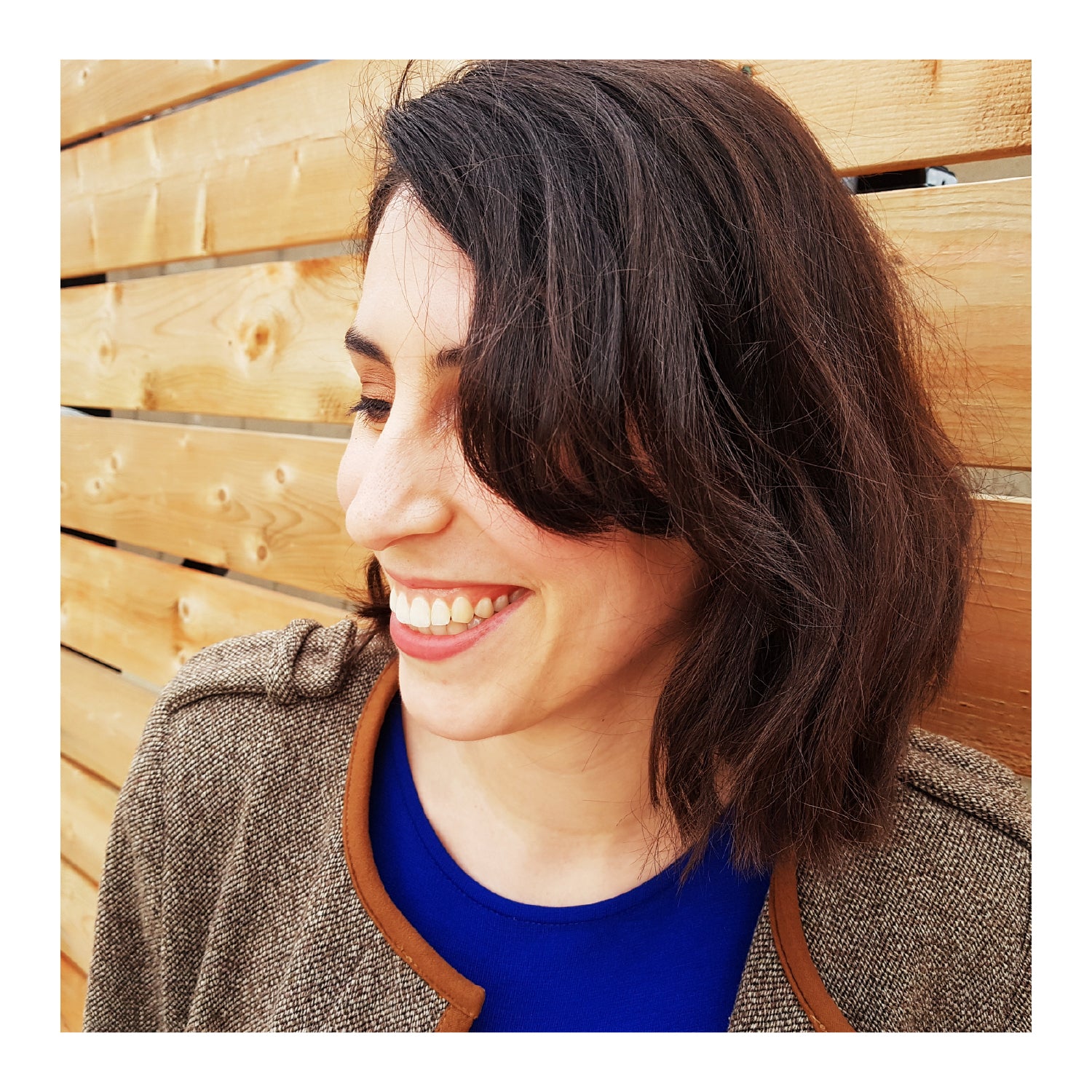I initially learned how to spin seam allowances while participating in the Summer Sampler 2019 piecing bootcamp led by Swim Bike Quilt, Fresh Lemon Quilts, and Freshly Pieced. Designer Lynn Carson Harris shared her tips on reducing bulky seams when sewing four patches. The technique helps to disperse the bulkiness created by the four seam allowances to avoid congestion in a single area.
While the technique may slow down your chain piecing flow, it will be well worth it when you arrive at the quilting stage. The flatter finish will improve how your sewing needle pierces your quilt sandwich avoiding those uneven stitches and reducing any tugging on your project.
You may also find this technique to be a great assembly alternative for many popular quilt patterns. For example, you can skip sewing long rows of blocks which often become uneven by sewing two rows into a series of four patches first, and sewing your four patches together.
That's what I'll be demonstrating in this tutorial. You'll learn some some tricks to confirm an accurate 1/4" seam allowance, how to spin the seam allowances of a four patch quilt block, and how to sew multiple four patches together into a larger unit.
Let's get started.
Supplies
You'll be able to complete this tutorial with items you have in your sewing studio.
- (4) 3.5" squares of fabric for each four patch you'd like to make
- Ormkraft cutting mat
- Ormkraft rotary cutter and blade
- Oliso Smart Iron
- Pressing mat
- Sewing machine and thread
- Seam ripper
How to Spin Seam Allowances: A Photo Tutorial
Step 1: Test Your 1/4" Seam Allowance
As with any project, testing your 1/4" seam allowance before beginning will eliminate frustrations later on. You can install a 1/4" presser foot if that's what you typically use when piecing. To test your seam allowance, sew two scraps of fabric together along one edge and measure the seam allowance. Adjust the position of your needle, as needed.

Step 2: Layout the Four Patch Squares
We're using simple 3.5" squares for this tutorial, but you can use any square or rectangular blocks, including half-square triangles, hourglasses blocks, etc., that can be assembled in this method.
Below is a photo of the top and bottom rows of my first four patch.

Step 3: Sew the Blocks Into Two Units
Place the two squares in the top row of your four patch right sides together and sew along the right edge. Do the same for the two squares in the bottom row. You will have (2) units.

Step 4: Confirm the 1/4" Seam Allowance is Accurate
Let's take another moment to confirm our accuracy.
Each square measured 3.5" to start. When placed side-by-side the two squares measured 3.5" x 7".

To calculate what the unit should measure once the squares are sewn together, subtract 0.5" from the width (so, 7" minus 0.5" equals 6.5").
Once the two squares are sewn together, finger press the unit open to confirm that the unit measures 3.5" x 6.5". If it does, you're sewing with an accurate 1/4" seam allowance. If it doesn't, adjust the location of your sewing needle and test again.

Step 5: Press the Seams in Alternate Directions
Nesting seams - that is, pressing our seams in alternate directions so that they rest neatly against each other - is an important component of this technique.
Press the seam allowance in the top unit to the left, and the seam allowance in the bottom unit to the right as shown below. Nesting your seams will also allow you to achieve a neatly matched intersection on the front of your block.

A Tip For Staying Organized When Pressing Seam Allowances
It can be easy to press your seam allowances in the wrong direction. To help avoid this, bring your blocks to the ironing mat with the block you want your seam allowance under facing up.
In the image below, both of the navy squares are/were facing up on the ironing mat. After setting the seam, I flipped open the unit and set the seam under the navy blue squares.

Step 6: Sew the Two Units into a Four Patch
Layout the two units in the correct order. Place the units right sides together. Confirm that the seams nest neatly. Sew along the top edge of the unit using a 1/4" seam allowance. Ensure that the bottom seam allowance doesn't get twisted as you sew.


Step 7: Unpick Stitches Within the Seam Allowance
In order to spin our seam allowances, we need to unpick some stitches. With the seam allowance sewn in Step 6 parallel to you, unpick the vertical stitches highlighted below. Do not unpick the stitches beyond the horizontal seam allowance.


Do this on the back of the seam allowance as well.
Step 8: Spin Your Seam Allowances
Open your four patch. Note the direction of the pressed seam allowances.
When spinning the seams, we are aiming to create a "windmill" formation along all the seam allowances, as shown with the arrows below. This will help you determine how to press the centre seams.

Finger press the centre of the seam allowance open. The seam should fall into the windmill formation naturally, but take care to ensure it is correct. Press with an iron once confirmed.


You've completed your first four patch with spun seam allowances!
To make a larger unit, use the same technique to complete subsequent four patch blocks.
Step 9: Make a Second Four Patch
Assemble a second four patch block using the same method in steps 2 through 8. Here's a summary of the steps:
- Layout the four patch squares
- Sew the squares into two units
- Press the seam allowances in alternate directions
- Sew the two units together
- Unpick stitches within the seam allowance
- Spin the seam allowances into a windmill formation
- Press
Below are two completed four patch blocks.

Step 10: Sew Two Four Patch Blocks Together
Place your two four patch blocks right sides together, nest the seam allowances, and sew along the right edge using a 1/4" seam allowance.
Step 11: Unpick Stitches Within the Seam Allowance
With the seam allowance sewn in Step 10 perpendicular to you, unpick the horizontal stitches as shown below. Do not unpick the stitches beyond the vertical seam allowance.

Step 12: Spin the Seam Allowances
Open the new unit. Note the direction of the pressed seam allowances. Finger press the centre seam allowance open so that the seam allowances create a windmill formation, and press with an iron.

Continue assembling four patch blocks and adding them to your larger unit as needed.

In the block below, I've combined seven rows into a larger block and each of the intersecting seam allowances have been spun for a flat finish.


Enjoy the fruits of your labour with a precisely pieced and flat quilt block ready for quilting!
In this blog:
- Pattern: A block from Fado Road by Ships & Violins
- Fabrics: Color Works Solids in Denim, Desert Rose, Creme Brule, Matcha, Bahama Blue, and Ginger.
- Thread: Aurifil 50wt in Dove

This post contains affiliate links, meaning, at no additional cost to you, if you click through and make a purchase, I may receive a commission.






7 comments
Thank you for sharing this tip. Great instructions.
Thank you for this very helpfull information!